By Ali Farkhan Tsani, Senior Editor of Mi’raj News Agency (MINA)
Tajikistan, a country in Central Asia with a population of 10,329,836 (Population Today, 2024), where the majority, 90 per cent are Muslims, controversially officially banned the headscarf in their country on June 19, 2024.
According to this law, violators will face substantial fines ranging from $747 to $3,724.
The law, approved by the Upper House of Parliament (Majlisi Milli), prohibits the wearing of “foreign clothing,” including headscarves or head coverings worn by Muslim women. Citizens are encouraged to wear Tajikistan’s national dress.
Also Read: When the Sumud Flotilla Didn’t Reach Gaza
The Tajikistan government has enacted a series of 35 religious-related measures, in what the government describes as “protecting national cultural values” and “preventing superstition and extremism.”
The ban on headscarves in Tajikistan aligns with the political stance of lifelong President Emomali Rahmon (formerly Emomali Sharifovich Rahmonov) since 1997.
President Rahmon’s Policy
Emomali Rahmon (72 years old, born October 5, 1952) began his career as Chairman of the Supreme Council of Tajikistan ‘Independent’ in 1992, following the ousting of pro-Communist Rahman Nabiyev.
Also Read: Noble Effort in Caring Senior Citizen; Best Practices from Indonesia to the World
He was elected President of Tajikistan in 1994. Following constitutional changes, Rahmon was re-elected President in 1999 with 97% of the vote. In 2003, Rahmon won a referendum allowing him to lead for two consecutive 7-year terms after his term ended in 2006.
Wikipedia notes that despite performing Hajj in Mecca in 1997, Rahmon was influenced by Zoroastrian teachings (ancient Persian teachings).
Wiki also mentions Tajikistan’s compliance with Western imperialist demands for ‘democratization’ in this predominantly Islamic country. ‘Democratization’ would strengthen the secular regime there, hindering Tajikistan’s people from turning to Islamic Sharia law.
The presence of Islamic movements in the region post-Soviet collapse poses a new threat to US imperialist interests in Central Asia. These concerns are quite valid, given the US’s numerous interests in the Central Asian region, including reducing Islamic movement influence through ‘democratization’ and ‘economic reform.’
Also Read: Open Letter to President Prabowo Subianto: Never Recognize the Sovereignty of Zionist Israel
In response to Tajikistan’s authoritarian government, the United States expressed deep concern in 2015 over restrictions on political opposition ahead of parliamentary elections on March 1, 2015.
These actions include unwarranted restrictions on freedom of expression, association, and peaceful assembly, all guaranteed by Tajikistan’s constitution and core commitments of the Organization for Security and Cooperation in Europe (OSCE).
The OSCE is an intergovernmental organization focused on regional security, consisting of member states in Europe, North America, and Asia. Its mandate includes issues such as arms control, advancing human rights, freedom of the press, and free and fair elections.
According to Euro News sources, President Emomali Rahmon has long targeted what is described as ‘extremism.’
Also Read: Measuring the Reality of the Israel-Palestine Two-State Solution
After a peace agreement to end a five-year civil war in 1997, Rahmon, who has been in power since 1994, first found a way to coexist with the opposition of Tajikistan Islamic Renaissance Party of (TIRP)
Under a UN-mediated agreement, representatives of the Islamic Sharia-based TIRP were to share 30 per cent of the government, and the TIRP was recognized as the first post-Soviet Central Asian political party based on Islamic values.
However, President Rahmon later removed TIRP from the government with his absolute authority, despite the party gradually becoming more secular over time.
In 2015, President Rahmon then closed TIRP and designated it as a terrorist organization after the party was implicated in a failed coup attempt, resulting in the death of General Abdulhalim Mirzo Nazarzoda in 2015. Nazarzoda was a key government bureaucrat who had served as Deputy Minister of Defense.
Also Read: Tunisian Man Donates Boat to Global Sumud Flotilla, Citing “Gaza Is Worth More Than Anything”
Regarding the ban on hijabs, President Rahmon first prohibited hijabs in public institutions, including universities and government buildings, in 2009.
He also promoted a number of formal and informal regulations intended to prevent neighboring countries from exerting influence, while strengthening their control over the country.
In another case, although there are no legal restrictions on beards in Tajikistan, some reports indicate law enforcement forcibly shaved heavily bearded men, seen as a potential sign of someone’s extremist religious views.
The Law on Parental Responsibility, which came into effect in 2011, imposes penalties on parents who send their children abroad for religious education. According to the same law, children under 18 are prohibited from entering places of worship without permission.
Also Read: The Sunnah of Eclipse Prayer: A Step-by-Step Guide
A statement from Tajikistan’s Committee on Religious Affairs in 2017 stated that 1,938 mosques were closed in just one year. Furthermore, places of worship were converted into tea houses and health centers.
The Tajikistan Parliament paved the way for Rahmon to enact the latest law, triggered by deadly attacks on the Crocus City Hall in Moscow on March 25, 2024, which killed 137 people.
Four attackers arrested by Russian law enforcement, said to be part of the ISIS-K branch Khorasan with Tajikistan passports, according to Russian authorities.
President Rahmon, who said he wanted to make Tajikistan “democratic, sovereign, law-based, and secular.”
Also Read: Reflecting on Road Engineering: An Effort Toward Driving Safety
Customs, Government and Sharia Law
In response to the ban on hijabs for Muslim women and traditional Tajik national costumes, Bhaswati Mukherjee, an Indian diplomat who served as Chief of Staff of the United Nations Human Rights Commissioner/UNHRC from 1991 to 1997, expressed her views.
Mukherjee, who once served as India’s Permanent Delegation to the United Nations Educational, Scientific and Cultural Organization/UNESCO, explored historical and cultural contexts and noted that Tajikistan, with its deeply rooted tribal customs, has never been extremist or fundamentalist.
The hijab, which is considered incompatible with the traditional attire of Tajik women, who have their own head coverings, also does not align with women’s freedom to choose their attire, while highlighting the need for education on the importance of diverse clothing.
Also Read: Stop the War Now
She expressed concern over the Tajikistan government’s decision to ban the hijab. She advocated for education that enables women to make informed choices.
Mukherjee reflected on her own experiences in Muslim countries, where she respects local customs regarding attire.
She also spoke about state intervention in women’s rights. Mukherjee compared Tajikistan’s approach to the laws in Taliban-controlled Afghanistan, where women, she said, are denied basic freedoms and education.
She acknowledged that while weak democracy is a concern, steps must be taken to protect women from regressive practices, said to be a faculty member at the Foreign Service Institute and various Universities in India and abroad, concentrating on scholarly issues on foreign policy, disarmament and strategic affairs.
Also Read: From Indonesia’s Zero Point, Three Muslim Women Raise a Flag and a Call for Humanity for Palestine
Cases of hijab bans, besides in Tajikistan, are also imposed in Tunisia (since 1981, partly repealed in 2011), Kosovo (since 2009), Azerbaijan (since 2010), Kyrgyzstan (2011), Austria (2017), France (2023) and Kazakhstan (2023).
Other countries, Germany, Belgium, Norway, and Bulgaria have laws banning the use of face coverings, known as burqas or veils, in schools or public institutions.
Regarding the hijab ban, columnists from Turkey, Ramazan Dengiz and Emre Basaran said, banning the hijab, especially in secular countries, is a setback that might deprive the Muslim communities in Europe of their rights. They said choosing clothing is a woman’s right, and the right to wear it if they feel it is part of their identity.
In 2013, the Conservative government of British Prime Minister David Cameron rejected calls to ban the burqa (veil) in public, stating, “women should have the freedom to choose what to wear.”
Also Read: The Virtues of a Journey to Al-Aqsa Mosque
In Ireland, Tao priest, Leo Varadkar, also rejected the possibility of a burqa ban in 2018, saying, “I do not agree with the doctrine of any religion or any religion, but I believe in religious freedom.”
For Muslim women, wearing a hijab to cover their honored auras is a religious obligation to their Lord, as a Muslimah identity.
In the Holy Book Al-Quran it is mentioned, which means, “O Prophet, tell your wives, your daughters and the wives of the faithful: ‘They should stretch out their hijabs over their entire bodies.’ This is so that they may be recognized and not harassed. And Allah is the Most Forgiving, Most Merciful.” (QS Al-Ahzab [33]: 59).
In another verse, it is said, which means, “Let them restrain their gaze and guard their private parts, and let them not display their beauty except what is apparent. And let them wrap their cloaks around their chests…” (QS An-Nuur [24]: 31).
Also His word, which means, “O Children of Adam, indeed We have sent down to you clothing to cover your nakedness and as adornment. But the clothing of righteousness – that is best. That is from the signs of Allah that perhaps they will remember.” (QS Al-A’raf [7]: 26).
Those who benefit from wearing a hijab for women are the wearer herself who is guarded her honor, and the state which means their people from women are protected from various evils.
Islamic teachings as a whole, not just about clothing, but also about law, morals (morality), and worship in general, are for the well-being, peace, and good of the universe. (QS Al-Anbiya [21]: 107).
Oh Tajiksitan, and other countries that still ban hijabs for Muslim women, remember that it is sharia, the provision of God, the Almighty God over all things. Allah, the Lord of power over your temporary authority. So, let Muslim women wear clothes for their Lord’s command, an unshakeable belief. (T/RE1/P2)
Mi’raj News Agency (MINA)





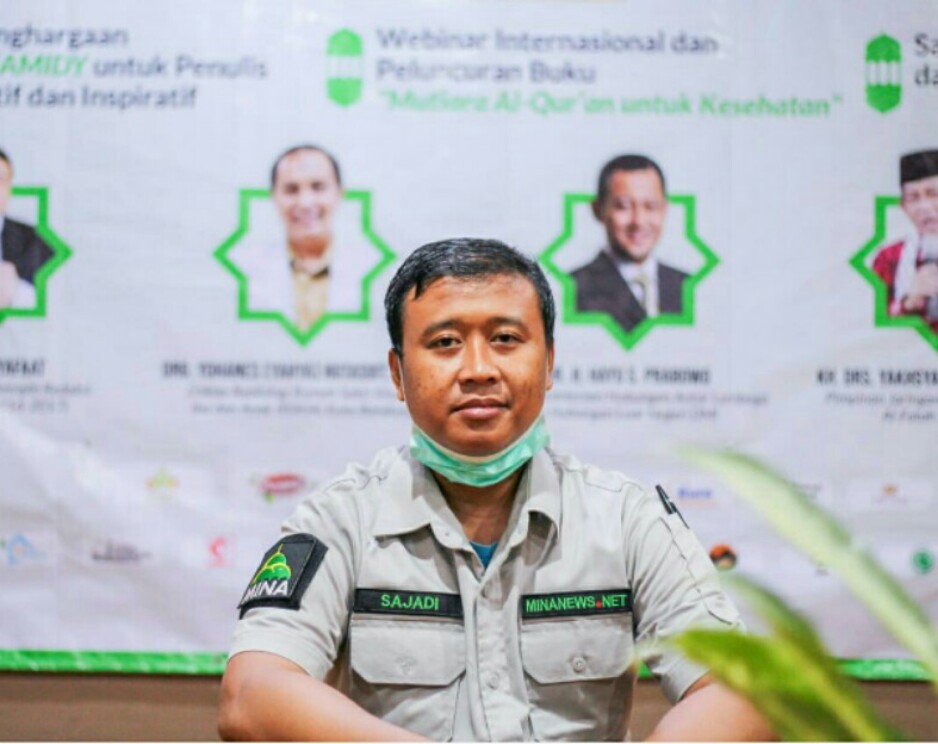
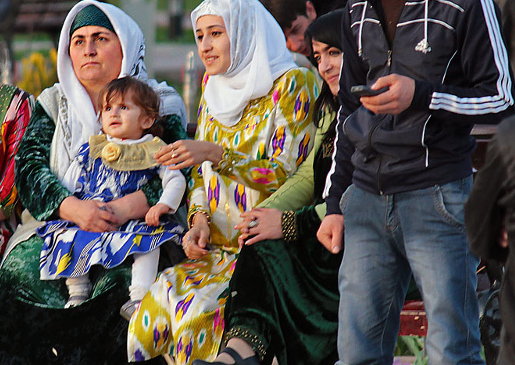












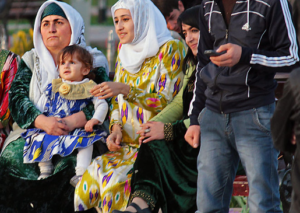
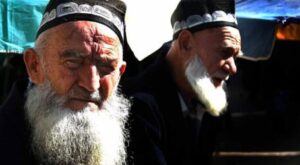
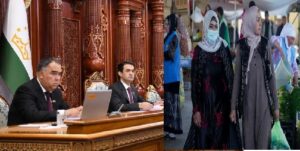















 Mina Indonesia
Mina Indonesia Mina Arabic
Mina Arabic